The 56th edition of the Vinitaly fair closed its doors this past April 17, allowing for some respite from all the running around, discussing, swirling, tasting, seeing friends, meeting business acquaintances and much more. More importantly, we were all able to finally sit back for a moment and think carefully about all the new and old vintages of wines that were tasted, the sort of proper analysis that is inordinately hard to do when running around from stand to stand (glass more or less in hand). And while there were many wines tasted that didn’t necessarily leave much of a memory, there were also those that did just that, and in a rather big way.
In the coming weeks, I will be publishing a number of reports on the outstanding wines I ran across and that deserve your attention. These range from the relatively obscure to the world-famous; I tried most of them in various masterclasses during the three and a half days of the fair, but stopping by specific stands also yielded pleasant surprises, which is always a plus with good wine fairs (it’s the good ones that allow you to make discoveries and spur you to consider trips to places you might have not thought of before). Some wines and territories stood out more than others this year: for example, Valle d’Aosta is rife with much better wines in 2023 than it was in the sorry (much too hot and dry) vintages of 2022 and 2021, but it’s not the only region and territory that made much better than expected wines in the historic 2023 vintage (historic and memorable only in the abnormally quantity of downy mildew the peninsula was flogged with: many wineries had close to their entire crops wiped out, with some going one worse, with nothing to show). Real winners at the fair were also Verduno Pelaverga (much better wines in 2023 than 2022), Blanc de Morgex (Valle d’Aosta again), Verdicchio dei Castelli di Jesi (with the single best lineup of wines I have ever tasted at any Verdicchio masterclass, and I have been conducting them regularly for the past twenty years, so that’s saying something), Cannonau di Sardegna and/or Barbagia Rosso, Barbaresco, Barolo, Brunello di Montalcino, Supertuscans and even Chinese wines will all be part of the written fodder coming your way.
But today, I will limit myself to a preview of sorts (allow me to wet your whistle, so to speak) highlighting those wines that really stood out, for one reason or another.
The wines in this tasting
All the wines in this report were tasted directly at Vinitaly in Verona from April 14-17. Many, but not all the wines in this report, were tasted at the Micro Mega Wines (MMW) thematic area I created three years ago for Vinitaly along with Gianni Bruno, Vinitaly area manager and a person I have greatly enjoyed working with for the past ten or so years, MMW is a specific section of the fair that features small-lot and small-batch wines.
BEST WINE TASTED AT VINITALY 2024:

Carlo Gnavi 2009 Caluso Passito 99
There aren’t too many times you’ll see me with my mouth shut when a wine is really good. That’s because the wine’s qualities deserve to be extolled (and in the case of wines made with obscure Italian native grapes, explained). But this beauty from Carlo Gnavi, one of Caluso’s most talented winemakers, stopped me in my tracks: for once, I was left not just truly surprised, but also speechless.
Unless memory fails me now (always a possibility) the Carlo Gnavi 2009 Caluso Passito is the best Caluso Passito I have ever tasted. And you can believe me when I tell you I have tasted quite a few in my lifetime. So the prior statement is really telling you something. In fact, this is one of the best Italian sweet wines I have tasted in a very long time too. It really is that good. In fact, that’s exactly why I chose this wine as my number one of this year’s fair: there were other wines that might top it score-wise (the Tua Rita 2021 Redigaffi and San Guido 2021 Sassicaia come to mind) but in its category of Erbaluce di Caluso wines there is simply nothing quite like it made by anyone, and I mean that including the wines of the last one or two decades too. To put it another way, there are many great paintings: but then you have the Mona Lisa, and all argumentation and discussion stops. In some ways, this 2009 Passito by Gnavi is the Mona Lisa of its genre, and hence it is my numero uno wine of this year’s Vinitaly fair.
The Erbaluce variety of Piedmont is one of my favourite Italian white grapes, one of which I have had a very stable wine diet of (both classically dry and sweet wines) beginning already back in my university days of the 1980s when I used to live in Rome (for example, the Enoteca Trimani in Rome was carrying already then vintages of Ferrando’s Vendemmia Tardiva Cariola and their Passito, along with classically dry Erbaluce wines that were once probably more highly thought of than they are today, however unfair that may be). Since then, I have had other many more memorable Erbaluce wines, but this 2009 bottling by Gnavi is simply spectacular: at once rich, dense, luscious, and honeyed, but also vibrant and light on its feet, it’s just amazingly well-balanced. No easy feat, when you pack in this much sugar, extract and alcohol (14%). The orchard fruit, candied citrus and tropical notes linger impressively on the seemingly endless finish. Currently already fifteen years old, and still amazingly young and fresh, with its curtain call nowhere in sight. Mesmerizing. Drinking window: 2024-2044.
MOST EXCITING NEW WINE TASTED AT VINITALY 2024:
Redalmo 2023 Marselan Veneto Rosso 93
Wowwwwwwwwwwwwwwwww. What else can you say when you come across a wine so good and so unexpected? Redalmo’s 2023 Marselan Veneto Rosso is so remarkably juicy, fresh, floral, fruity and balanced that it literally slides down like water, but with so much more flavour and depth. Marselan is a rarely grown and vinified grape in Italy, which might come as a surprise given the country has more wine grapes than any other in the world with which it produces wine in commercially significant volumes (close to 600 officially recognized grapes at last count and endless permutations of many such grapes and wines) most of which are turned into wine at some point in time. But it’s highly likely this Marselan wine will change that state of affairs, because this is just too good a wine to not attract attention and deny giving oneself the opportunity to try his or her hand at it. Marselan is a crossing of Cabernet Sauvignon and Grenache developed by Paul Truel in 1961 in France; it was intended to be an ideal wine grape for areas with hot climates but its small berries turned off farmers faster than you could blink. And so the grape fell by the wayside. You might be surprised to know that in the last 10 years the best Marselan wines have been made in China, where the grape has adapted remarkably well; some good Marselan wines are made also in Uruguay and southern France, but it’s really not that common anywhere else. And now this beauty from Veneto’s little but high-quality Redalmo winery joins the fray (only a couple of other wineries are making a Marselan wine in Italy, but to the best of my knowledge only one other is a monovariety bottling, and it’s oaked). Redalmo’s version is vinified and matured in stainless steel only, a treatment option that allows the perfumed violet and crunchy red and blue fruit aromas and flavours to shine brightly from start to finish (of the bottle). Lowish in alcohol octanes but high on flavour and balance, this is an absolute jewel of a red wine and one of the best “new” wines (and vintages) I have had in the last decade or so. That’s how good it is. At the winery, some thought is being given to vinifying part of this wine in oak in the next vintage; and though I appreciate the will to experiment, try new things, and boldly go where nobody’s gone before (or at this winery, at least), I hope that does not come to be. First, because the winery already makes an oaked red wine, so to eliminate a completely different wine from the estate portfolio such as this one (an unoaked beauty) doesn’t make much sense (and besides, if the goal is to see what oaking does to Marselan, then plant more vines of it and make a second Marselan wine that is oak-aged). And second, because this wine is just too darn good to muck around with. But, it’s not my winery, so who knows. Drinking window: 2024-2030.
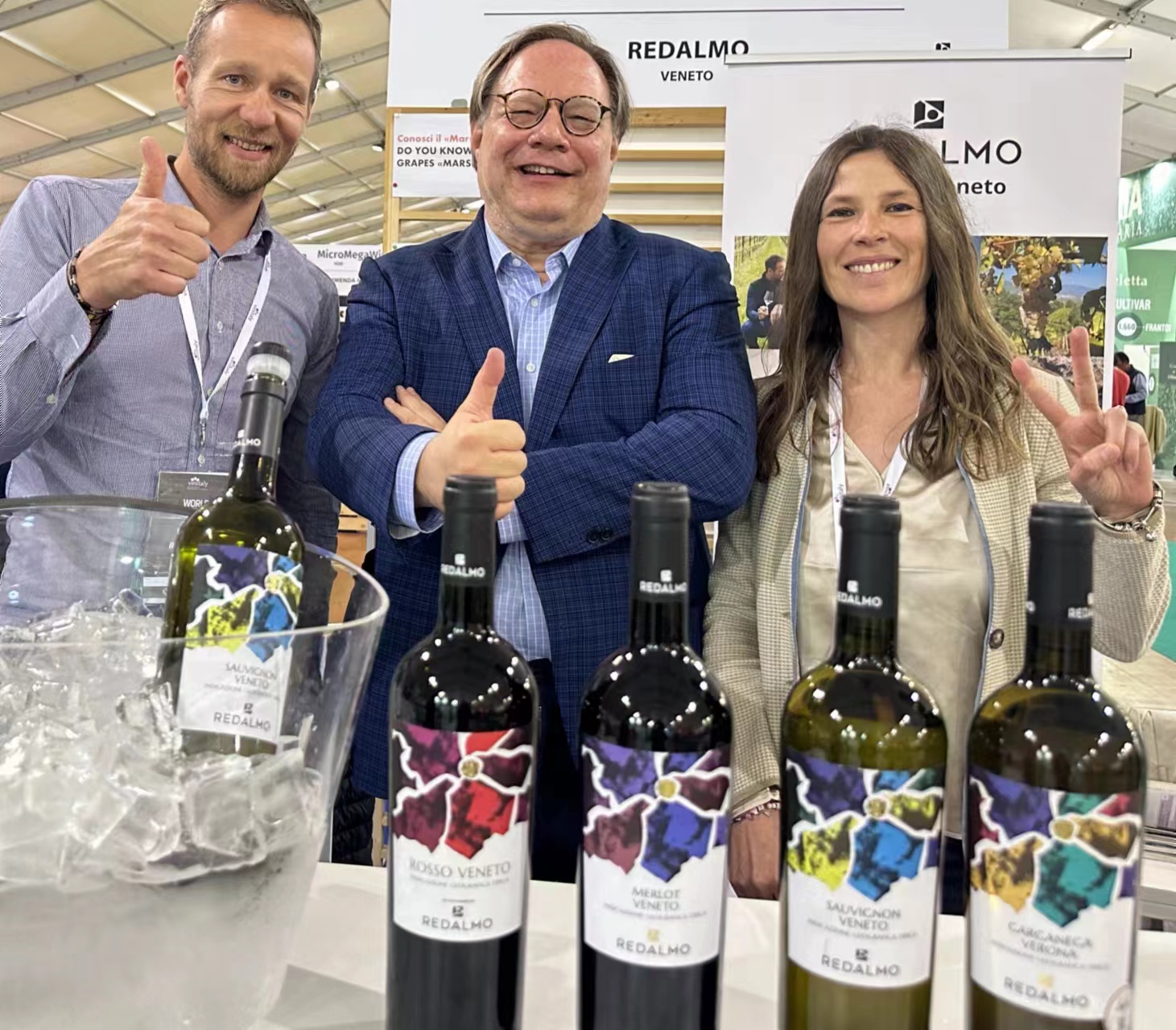
MOST INTERESTING NEW WINE TASTED AT VINITALY 2024:
Valdisole 2022 (Malvasia Moscata) Elektra Vino da Tavola 93
I normally don’t like strongly macerated white wines because getting the right amount of maceration is no easy task: many such wines, when not downright flawed and undrinkable, are often just too bitter and grippy because the prolonged skin contact was taken too far with too much tannin leaching out and making the wine unbalanced. The grape variety is also very important: some are much better for maceration purposes than others, and in this light the aromatic grapes such as Gewurztraminer have a real leg up on the competition.
So when passionate and talented winemaker/winery owners combine with the right grape variety, all bets are off, and wine magic can happen. Which is exactly the case with the Valdisole winery, founded in 2015 in Piedmont, at Corneliano d’Alba.
Bright deep yellow colour with a delicate orange cast. Complex aromas of lemon curd, white pepper, lychee, saffron, crystallized apricots, and quince paste dominate on the fresh, rather floral and penetrating nose. Then also penetrating but harmonious on the palate, where nuances of linden honey combine with the ripe crystallized and fresh yellow fruit that was present on the nose. Finishes suave and vibrant, with outstanding length and purity. The winemaking talent level is on full display given this was macerated six months on the skins and yet is beautifully well-balanced. Elektra is a knockout orange wine made with Malvasia Moscata, a rare aromatic white grape from Piedmont (there’s only about six or seven people growing it, but few bottle a wine with it). This winery may be a newcomer to the Italian wine scene, but with wines this good I’d say it’s here to stay. Well done. Drinking window: 2024-2027.
BEST SPARKLING WINE TASTED AT VINITALY 2024:
(Tie)
Paolo Saracco 2023 Moscato d’Asti 94
Ca’ D’ Gal Asti Spumante 92
Ca’ D’ Gal Moscato d’Asti Lumine 92
Hands down, the best sparkling wine I tasted at Vinitaly this year was the Paolo Saracco 2023 Moscato d’Asti, that is at once a marvel of lightness of being and of mindboggling viscosity, a combination that is rare to find in most wines, never mind Moscato d’Asti. Moscato d’Asti just doesn’t get any purer, more concentrated, more complex, and deeper than this. Drinking window: 2024-2032.
On a different but just as meritorious note are the two entry-level wines made by Ca’ D’Gal, a winery that is expanding under the guidance of newly arrived Alessandro Varagnolo. The top bottling vintage cru wines are noteworthy (as is the source of their grapes, the grand cru area of Canelli) but it’s the winery’s two less expensive bottlings that I want to tell you about, for they are those that will leave you looking to fill up your glass again (and again). The Ca’ D’ Gal Asti Spumante is one of the two best, at no worse three best, such wines made in Italy today, a category that is often the realm of cheap, and cheaply-made, industrial sparklers of little depth and class that outside of their low price hold little interest for anyone. Drinking window: 2024-2025.
Similarly, the Ca’ D’ Gal Moscato d’Asti Lumine is everything a good Moscato d’Asti is and should be: sweet but not cloying, fresh and easygoing but also complex and with some depth. Given it’s an entry-level wine, it’s price tag makes it an even bigger steal than Moscato d’Asti wines already are, most of the time. Drinking window: 2024-2038.
Neither one of these two wines can be described as cloying, unbalanced, thin green or of any other negative trait you can think of: simply put, these are just two splendid bubblies that will make any wine-loving individual love the stuff even more. And they bring to the fore the really strong work being done by Alessandro Varagnolo and his team in bringing this prestigious, high-quality estate back to life.
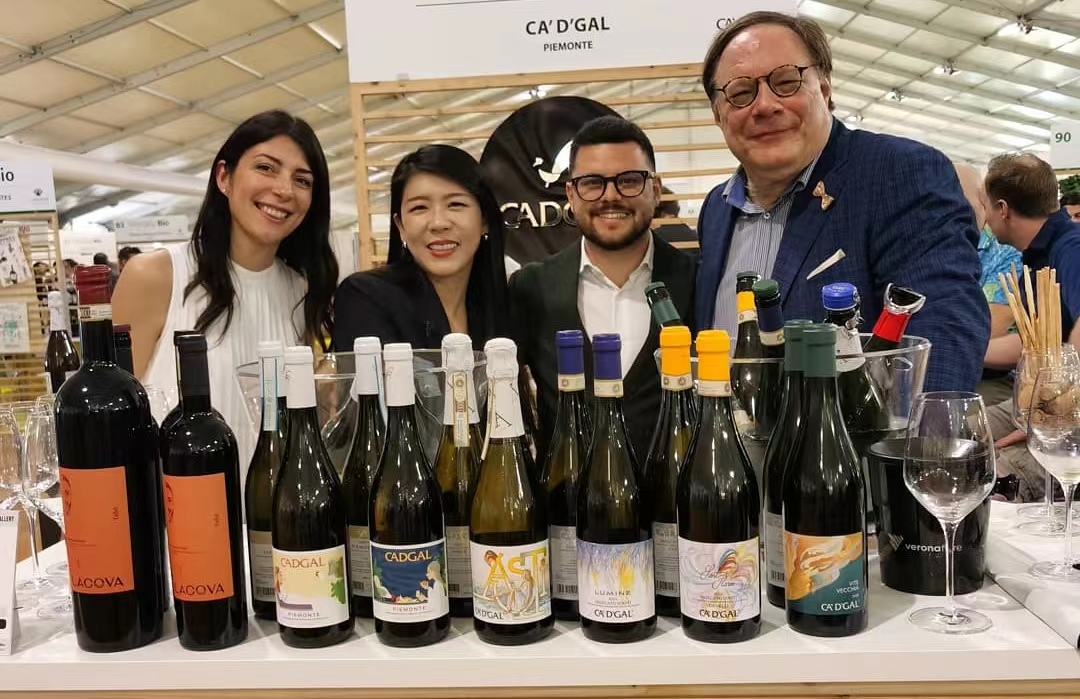
BEST ROSATO WINE TASTED AT VINITALY 2024:
Tenuta Parco dei Monaci 2023 Rosapersempre Matera Rosato 92
Basilicata isn’t the first place you think of when looking for a good Italian Rosato: Abruzzo and Puglia have that market pretty well-cornered. And though there certainly are a few other outstanding Rosato wines coming from other parts of the country (Elba, Piedmont). And Primitivo isn’t the first grape either when you think of a good Italian Rosato wine, and yet… And yet that’s exactly what you get with Tenuta Parco dei Monaci, a rather deep-coloured pink wine (more like a light red than a true Rosé) that is also deep, and long, on aromas and flavours of red fruit, sweet spices and herbs. Add to this that the wine’s name is an act of love from the husband to his wife, and you have a wine that’s truly easy to like even if it weren’t so darn good. Drinking window: 2024-2028.
BEST RED WINE TASTED AT VINITALY 2024:
Tua Rita 2021 Merlot Redigaffi Toscana Rosso 100
This one’s easy. As much as I liked a number of wines at this year’s fair, there is no denying the Tua Rita 2021 Merlot Redigaffi Toscana is basically a masterpiece. Redigaffi has been one of Italy’s and the world’s best Merlot wines for a very long time now (the 1999 and 2001 were already splendid, world-class Merlot wines) and the 2021 only adds to this famous wine’s legacy. Pure, silky, creamy, marvelously well-balanced, utterly seamless in its delivery of ripe small dark berries, candied violet and sweet spices, words cannot do this beauty justice. Drinking window: 2026-2036.
BEST SWEET WINE TASTED AT VINITALY 2024:
Not counting the Carlo Gnavi 2009 Caluso Passito that was my top wine tasted at this year’s Vinitaly (all wine categories included) as already mentioned, then my pick of the sugar-endowed litter is:
Begali 2021 Recioto della Valpolicella 98
As is unfortunately the case with most sweet wines everywhere else, Recioto della Valpolicella has also fallen on some hard times of late, with producers not even making it every year (not because of vintage quality, but just because they still have old vintages to sell). But the Begali 2021 Recioto della Valpolicella is drop-dead gorgeous and deserves your attention, care, money, taste buds, memory, wine fridge, cellar, and everything else in between.
Bright red-ruby colour. The open-knit, intense, floral nose boasts remarkable purity, daintiness, depth and precision to its red cherry, red berry reduction, violet, Oriental spices and marzipan aromas. Then showcases similar purity and concentration on the palate, with a multilayered quality to the deep, ripe, clean and long flavours of blackberry, strawberry, sandalwood, marzipan and ink. A sweet wine of truly wondrous sugar/acid/tannin/balance (clocks in at about 100-110 g/L r.s. and spent about two years in tonneaux, but you’ll never guess it spent that much time in oak), it magically combines lightness of being with seamlessness and accuracy. This is an absolutely fantastic example of Recioto della Valpolicella made by one of the wineries that is universally recognized for being one of the very best at it. Last made in 2016, this is a blend of 65% Corvina (and Corvinone), 30% Rondinella, 5% Molinara and 5% Oseleta. About 4000 half/bottles made, so make sure you get these goods while the gettings are still good; with that small number of just as small bottles available, those gettings won’t be good for long (as in they won’t last). Drin king window: 2024-2040.
BEST WINERY MAKING WINES MADE WITH (MOSTLY) JUST ONE GRAPE VARIETY:
Nobody in Italy is more talented at getting the most from Moscato Giallo [or to be precise, a specific biotype/distinct variety (it’s not clear yet which it is) called Moscato Giallo Fleur d’Oranger] than Elisa Dilavanzo of the Maeli estate. In fact, very few estates anywhere in Italy are so-one variety dependent (Sartarelli in the Marche with their bevy of Verdicchio wines is one that comes to mind) as this winery located in the Veneto’s volcanic Colli Euganei but when you are this good at what you do, why rock the boat? You can choose any of her Moscato Giallo wines, from the still version (), the air-dried Passito sweet version, to the Pet-Nat, to the sparkling wine version, and you will never come away disappointed.
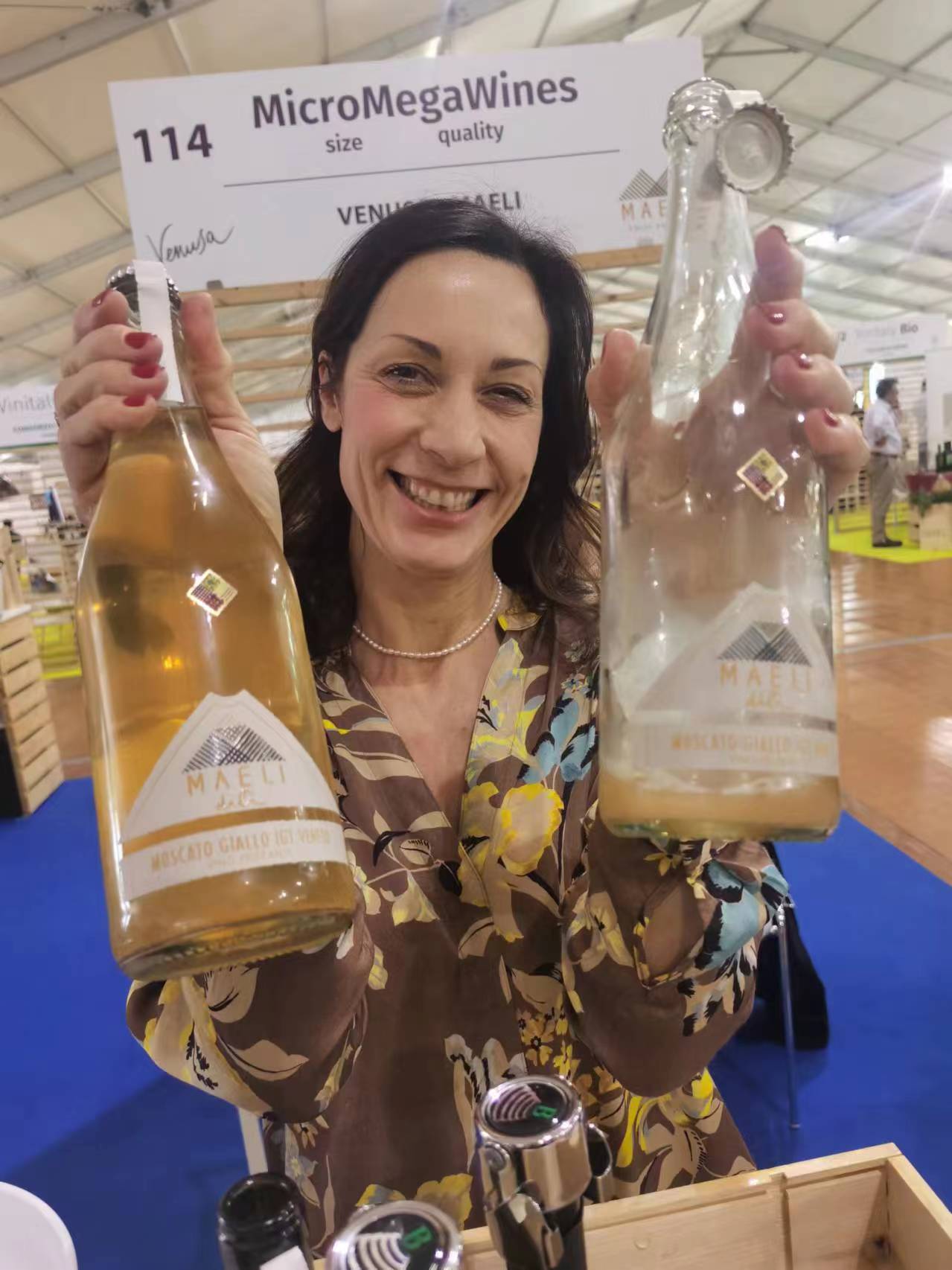
BEST WINERY MAKING A NEW WINE MADE BY OBSERVATION AND RESEARCH:
Tiberio 2023 Pecorino Colline Pescaresi 93
Bright green-tinged deep straw colour. Very ripe aromas of quince paste, lemon curd, glazed pineapple and orange oil, freshened up by a Pecorino-typical note of green figs; not much in the way of the variety’s usual sage and thyme nuances here. Then rich ripe and mellow, with a velvety mouthfeel to the fleshy, sultry almost tropical fruit and ripe citrus flavours. The aftertaste is long, silky and round. I really liked this, but I’m not sure it will age quite as long as some other vintages of Tiberio’s Pecorino, so drink up: but then again, it’s so delicious now, why defer gratification? Drinking window: 2024-2029.

Tiberio Pecorino Biotypes (experimental vinifications under study)
I don’t think anybody really needs to sing the praises of Tiberio anymore, the small family-run Abruzzo estate that has, in just two decades, vaulted to the top of the heap of Italy’s best wineries. Wine lovers know that winemaker Cristiana and viticulturist Antonio Tiberio, brother and sister, are now making at least two iconic wines that are sought after by collectors and found on multi-starred Michelin restaurants all over the world. One is a Trebbiano d’Abruzzo called Fonte Canale, the other a Montepulciano d’Abruzzo called Colle Vota. Both are the result of research that stems from observational experiences and clear thinking that led to the recognition and identification of what are different grape varieties and biotypes, that were then turned into highly unique wines based on their genetic and habitat-related conditions. This same way of thinking is now being carried over to the winery’s third important wine grape, Pecorino. The current wine was also born from observational data: that is Antonio and Cristiana taking a stroll in their old Trebbiano Abruzzese vineyard and realizing some vines there couldn’t be of Trebbiano Abruzzese at all, given how different they looked (just looking at the leaves of the two varieties clearly tells you which is which, it really is that easy; but of course, you have to know what you are talking about). And so their current Pecorino bottling was born. That, folks, is how a serious winery, and how serious winery owners, go about their job, which is also quite clearly (at least in this case) a passion.
But the real news is that, because of their repeated observations in the vineyards, it has become apparent that at least three different popualtions of Pecorino garpevines live in the Tiberio vineyards. Anmdas is in their style., the sibnlings have proceeded to vinify them separately now for a number of years. I have tasted three vintages now of such micro-vinifications and I can see that the time is coming close to the identification of a “cru” or “selection” bottling of one of the biotypes. And so after the Fonte Canale and the Colle Vota, a third new selection/cru wine will likely see the light of day at Tiberio, this time from Pecorino. I have already tasted possible candidates and am very excited about what the future will hold, l think you should be too.
BEST GROUP OF WINES FROM THE SAME, MOST RECENT, VINTAGE
TASTED AT VINITALY 2024:
The 2019 Brunello di Montalcino wines
Canalicchio di Sopra 2019 Brunello di Montalcino 94
Very pretty deep full red. Refined, deep, showy and expressive aromas of dark red cherry, red plum, blood orange and sandalwood are complemented by hints of tobacco and herbs. Then similar flavours, with a steely backbone leaving an impression of elegant austerity and solidity. Closes smooth and ripe but taut, with very good palate presence and tension. Great classic Brunello that lacks the depth and concentration of the singelvineyard/selection bottlings but that offers a ton of wine for the money. Very well done here. I have slightly upped my score from my initial review, and that rarely happens. Drinking window: 2024-2039.
Caprili 2019 Brunello di Montalcino 94
Rather saturated but vibrant dark red. Aromas of dark red cherry, licorice, menthol and quinine on the invitingly floral nose. Still a bit youthfully imploded today, with the steely red and darker fruit flavours slightly in the background and in need of time in a good cellar to become fully expressed. Closes long, with noble tannins and building red-fruit character with aeration. Don’t touch a bottle for another six to seven years at least. Drinking window: 2031-2040.
Casisano 2019 Brunello di Montalcino 93
Very pretty deep crimson red. Unlike another bottling of this 2019, I found this version not superripe at all but rather very floral, with crisp red cherry and currant fruit aromas sexed up by a penetrating violet perfume. On the palate, steely red cherry, mint, herbs, truffles and balsamic oils dominate. Closes long and pure, with rising minerality and a hint of graphite. Unlike another bottle of the Casisano 2019 I had tasted previously that was uncharacteristically superpipe, thick and fleshy, this wine spoke much more of the specific sector of Montalcino the grapes used to make it come from, the high-altitude vineyards near the Passo del Lume Spento area not far from where Le Ragnaie has some of its high-altitude vineyards. Those with Euro-palates will prefer this floral, more politely-styled version, but I am at a loss to explain why the wines in these two different occasions, whiloe outstanding both times, tasted so different to me. Drinking window: 2028-2036.
Il Poggione 2019 Brunello di Montalcino 94
Good bright, dark red. Slightly musky aromas of red plum, red cherry, and herbs, complicate by strong notes of loam, tobacco and licorice; strikes me as less lifted and pure than a two other bottles of Il Poggione 2019 Brunello I have had in the last month. Very concentrated and dense, but at the same time nicely light on its feet and sappy, with the floral flavours complicated by earth tones, tobacco and licorice notes. Then also dense on the long aftertaste. This is a very good wine, but I liked it less than two other bottles of the 2019 Il Poggione Brunello that were characterized by daintier pomegranate- and sour red cherry-accented aromas and flavours that were purer and less marked by herbal, earthy and licorice notes. Drinking window: 2028-2045.
Honestly, I can’t remember the last time I tasted so many wines that were this good from one denomination. In fact, the closest any wines come to how great the 2019 Brunellos are is another pair of Montalcino vintages, the 2015 and 2016. But neither one of those two vintages gave wines that are as immediately easy to understand as the 2019 Brunellos are (and in the case of the 2016 Brunellos, at least another dozen years will be needed for them to show their true, exceptional, colours). It’s the rare vintage in which the wines are immediately delicious, and good at all price points and category levels (you can actually make the case that the 2019 Brunellos are in fact so good across the board that you really do not need to ante up for the 2019 single vineyard and selection wines that usually cost an arm and a leg more but aren’t necessarily an arm and a leg better). I have rarely and most likely never had so many good (and in little or no way faulty) wines from Montalcino as I had this year: this point was driven home one more time at the masterclass I guided on Italy’s “Four Bs: Barbaresco, Barolo, Brunello, Bolgheri and the Supertuscans”. And while all the wines were downright remarkable as is very rarely truly the case (despite all the hype and hilariously inflated high scores from wine writers and magazines who can’t get by and need help from wineries and producer associations to keep them from having to work a real day job), but it was the Brunellos that as a group outclassed all the others. Even better, given that 2019 is a relatively cool climate vintage (“cool climate” by what we have unfortunately grown accustomed to in the twenty-first century, because otherwise, it was anything but) the wines speak of the territorial differences within Montalcino, a very large extension of vines that does speak clearly of sub-areas and differences in terroirs. The following wines may not be the best of the best in what is a year of exceptionally good wines, but are all outstanding quaffs that express different aspects of the wines made in different sections of the Montalcino denomination (which is precisely why I chose them for the masterclass).
Having admitted just how much I like, and how highly I think of the 2019 Brunellos, it behooves me to point out that there is one aspect about these wines that has kept me awake at nights wondering. I have now tasted many of the 2019 Brunellos already on three different occasions, and the one caveat I have about the 2019 Brunellos is that they show an at times noteworthy degree of bottle variation. This reality was borne out again at the Vinitaly masterclass I just mentioned above. Happily, most of the time this amounts to the wines showing even better on subsequent tastings, a nod to Sangiovese’s, and Brunello’s in particular, capacity to improve with even small amounts of bottle age. However, at times the wines taste wildly different, to an extent that really leaves me scratching my head. In some cases, it is not just that the same wine differs in its aroma and flavour profile, but in texture and structure (for example, Casisano, as you can see by this tasting note and the one in my Brunello new vintage article published this last month here at the TerroirSense Wine Review), which is quite another matter; in others, the wine just isn’t as good as it was on other occasions (for example, Il Poggione, again in reference to, and when comparing, this tasting note and the one in my Brunello new vintage article published this last month here at the TerroirSense Wine Review). A lot of this discrepancy is simply the result of different barrels and bottlings; different storage conditions; and bottle handling, including shipping and transport. But I need to point out that in the forty or so years I have been writing about wine, I have tested myself repeatedly over the years with the same wines from the same vintages at a distance of six, twelve and twenty-four months from the initial tasting note and score; it is extremely rare that my scores, awarded in blind fashion, deviate by more than one point. It is even rarer that a wine I taste at a “Primeurs” event is light and well-balanced and years later turns out to be super-fleshy and ripe (or viceversa), unless the wine was obviously the result of, it happens, mistaken vineyard and cellar decisions (and gets freshened up or loaded up subsequently with legally-allowed, finite, percentages of other vintages) but that is what I am finding here with the 2019 Brunellos, if thankfully only to a small degree. But for such an important denomination and wine, this is something Brunello producers really have to get their head around and watch out for.
BEST GROUP OF WINES ACROSS MORE THAN ONE RECENT VINTAGE
TASTED AT VINITALY 2024:

Barbagia Rosso/Cannonau di Sardegna wines of the Mamojà association
Little-known outside of Italy (while inside the country many have begun to take real notice), one of Italy’s best kept secrets is the enormously high-quality and talent levels of the producers that make up the Mamojà association of Sardinia. All the wines of the association of producers Mamojà (most of the reds are labeled as Barbagia Rosso but some are listed as Cannonau di Sardegna; the white wines, made with the Granatza grape, are also very exciting but represent only 5% of the group’s total production for now).
The Mamojà group of producers is a remarkably gifted one: tasting the wines of producer after producer reveals a slew of excellent wines with practically no faulty wines among the bunch. Even better, the wines all showcase a terroir-effect, resembling each other to a degree but expressing the nuances that you’d expect to come from differences in topography, exposure, altitude and age of the vines. Mercifully, though winemaking choices also inevitably play a role (these revolve mostly around the winemaker choosing to use, or not, whole bunches and new wood, and to what degree), the Mamojada’s wines speak of their terroir. In other words, “there is a there there”, and the wine territory hasn’t become the sad but hilarious joke that many others are nowadays, where you find producers completely oblivious to their nonsensical ramblings on about “terroir” while presenting you wines that are completely different from each other and totally unrecognizable as far as territorial provenance “thanks to” their being: aged in cement or amphoras or new oak or old oak or small oak or intermediate oak or large oak; sulfur-free, sulfur-intermediate, or sulfur-loaded; made with 100% of the stated grape variety, or only 85% as European allows, or far less as the law does not allow; made with the aid of arabic gum, inverse osmosis, spinning cones, and more of the same; made by plowing the fields with horses, cows, and other animals; by picking the grapes during the day or at night; and more still.
And while high-talent levels are somewhat expected from say Barolo producers, it is remarkable just how talented the Sardinian producers of the Mamojà association are, many wineries of which make less than 10,000 bottles a year and were making wine for home consumption only a few years ago. And yet, these passionate winemaking families competently make wines that boast silky tannins and impeccable balance [such that, for example, even their wines that have noteworthy alcohol levels (after all, when it comes to Sardinia’s Cannonau, we are most likely talking about a Sardinian biotype of Grenache planted in a very warm and dry climate, even if it is at usually very high altitudes) taste remarkably silky and light on their feet].
Check the TerroirSense Wine Review over the next couple of weeks for a full-length, long, article describing the Mamojada in-depth, along with all the wines of the producers that are part of this association.
BEST GROUP OF WINES THAT SHOW 2023 MIGHT NOT BE THE DISASTROUS YEAR EVERYBODY THOUGHT IT WOULD BE
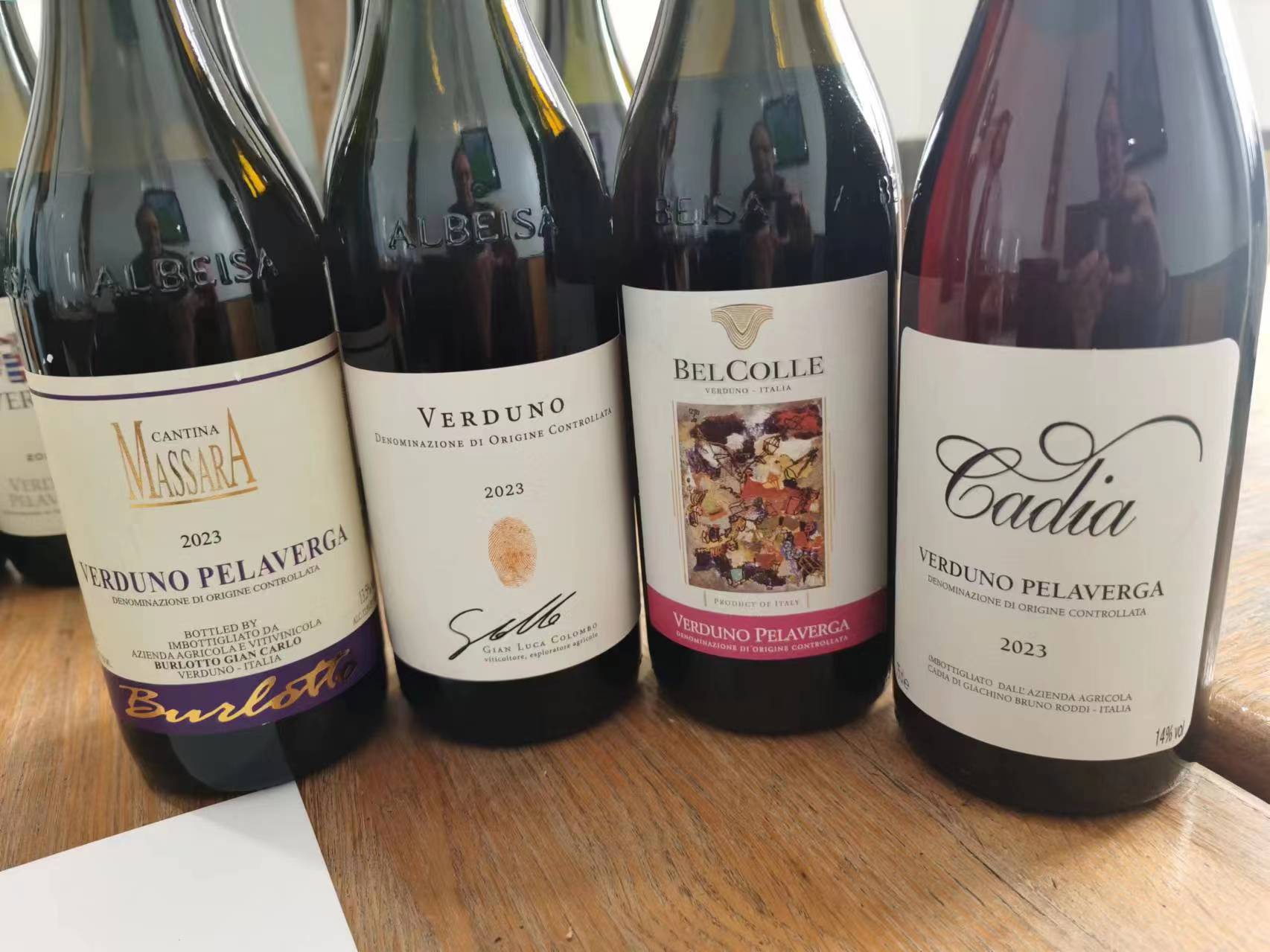
At this year’s Vinitaly, the wines of another association came up smelling like roses (literally, you might say): Verduno È Uno, the producers of which are all located in the territory of Verduno, one of the eleven communes of the Barolo denomination. They have bandied together to promote and broadcast their Verduno Pelaverga wine, made with the grape called Pelaverga Piccolo, that literally grows nowhere else in Italy. But while the wines have always been good (with high-quality, world-famous Barolo (and Barbaresco) producers such as G.B. Burlotto, Castello di Verduno and Fratelli Alessandria leading the way, it would be really surprising if it were otherwise), it is utterly revelatory just how good the 2023s are. Over a weekend last year, I led the inaugural edition of what has become the annual presentation of Verduno Pelaverga’s new vintage: the wines were mostly fine, but being of the hot 2022 vintage, they were less than they could have been, This is because the Pelaverga Piccolo variety is a lightly aromatic grape and in hot and dry growing seasons its aromatic potential becomes inevitably compressed and reduced. By contrast, in a cooler, if disease-plagued year like 2023, the variety can showcase all it has to offer (which is plenty), starting with its almost magical perfume: at a masterclass I led at Vinitaly this year on these wines, I and everybody in attendance were literally blown away by the levels of purity, precision and penetrance the 2023 Verduno Pelaverga wines demonstrated.
I will be writing a full report on these wines shortly here on the TerroirSense Wine Review, so look for it.
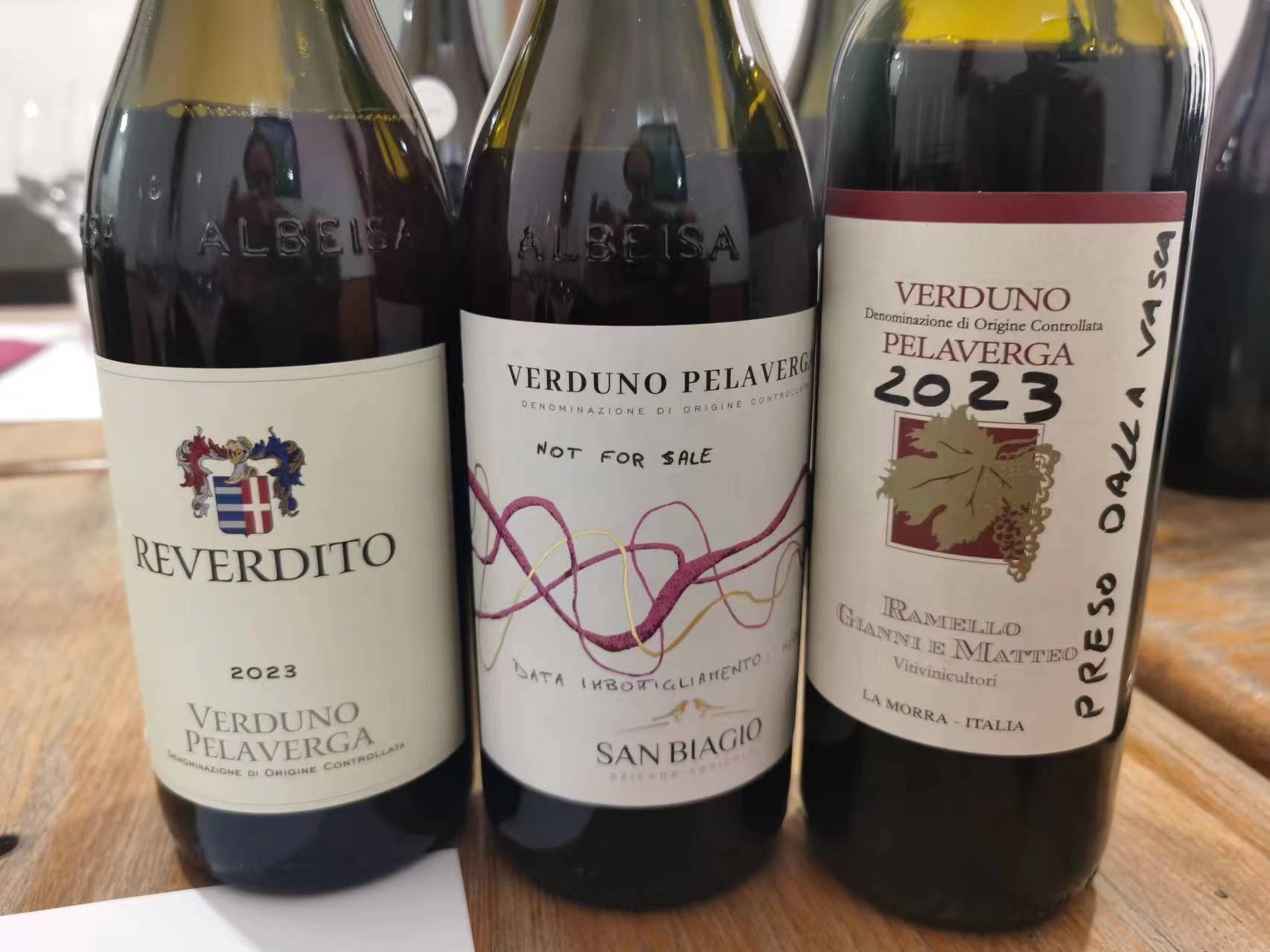
BEST WINERY NEWCOMERS DISCOVERED AT THIS YEAR’S VINITALY 2024:
La Dolce Vigna 2022 Mandrolisai 93
Bentu 2022 Arvesiniadu Livànti Isola dei Nuraghi 92
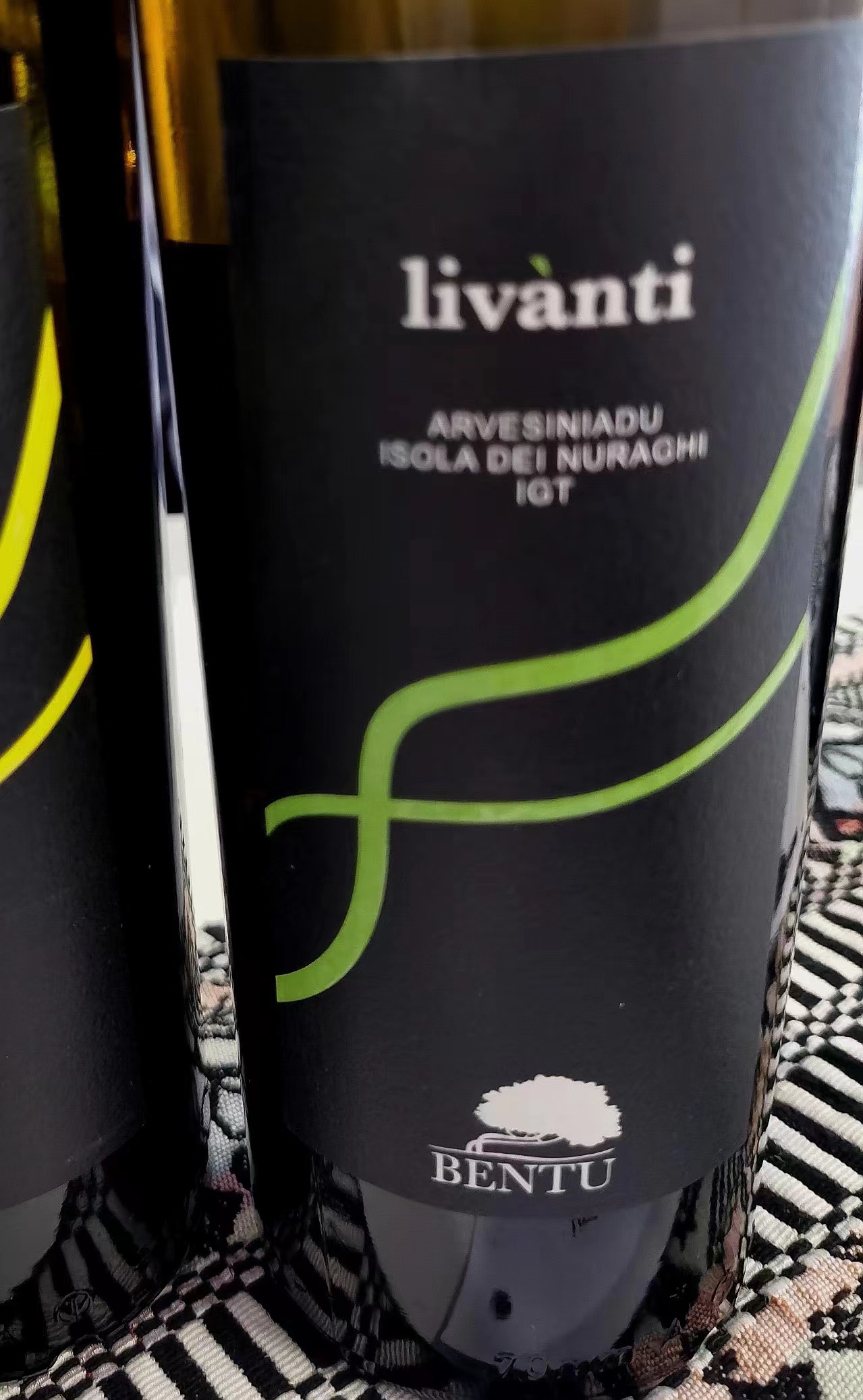
Sardinia comes up aces once again this year, as both these wines are produced in that beautiful island, the Mediterranean’s second-largest.
Created by young, talented and likeable Antonella Pisu, La Dolce Vigna makes only one wine, but an amazing one. Only the third vintage made so far, the La Dolce Vigna 2022 Mandrolisai is a blend of 50% Bovale Sardo, 25% Cannonau and 25% Monica, from the island’s inland Mandrolisai territory and it speaks clearly of each of those grape varieties. Bright deep ruby in colour (that’s the Bovale Sardo doing its thing). Very perfumed and fruity, the very inviting nose offers rich ripe red cherry, sweet spice and aromatic herb nuances (that’s the Cannonau singing its tune). In the mouth, penetrating freshness and juiciness are the hallmarks (those are Monica’s passwords) with the red cherry fruit boasting a creaminess that is both Cannonau- and vintage-related. The aftertaste is long, sultry and delicious; this 2022 is much creamier and has more sweetness of fruit than the 2021 Mandrolisai, which is also a beautiful wine but is steelier and more austere. Aged about nine months in oak, but you can’t tell. Beautiful stuff: very well done! Drinking window: 2026-2030.
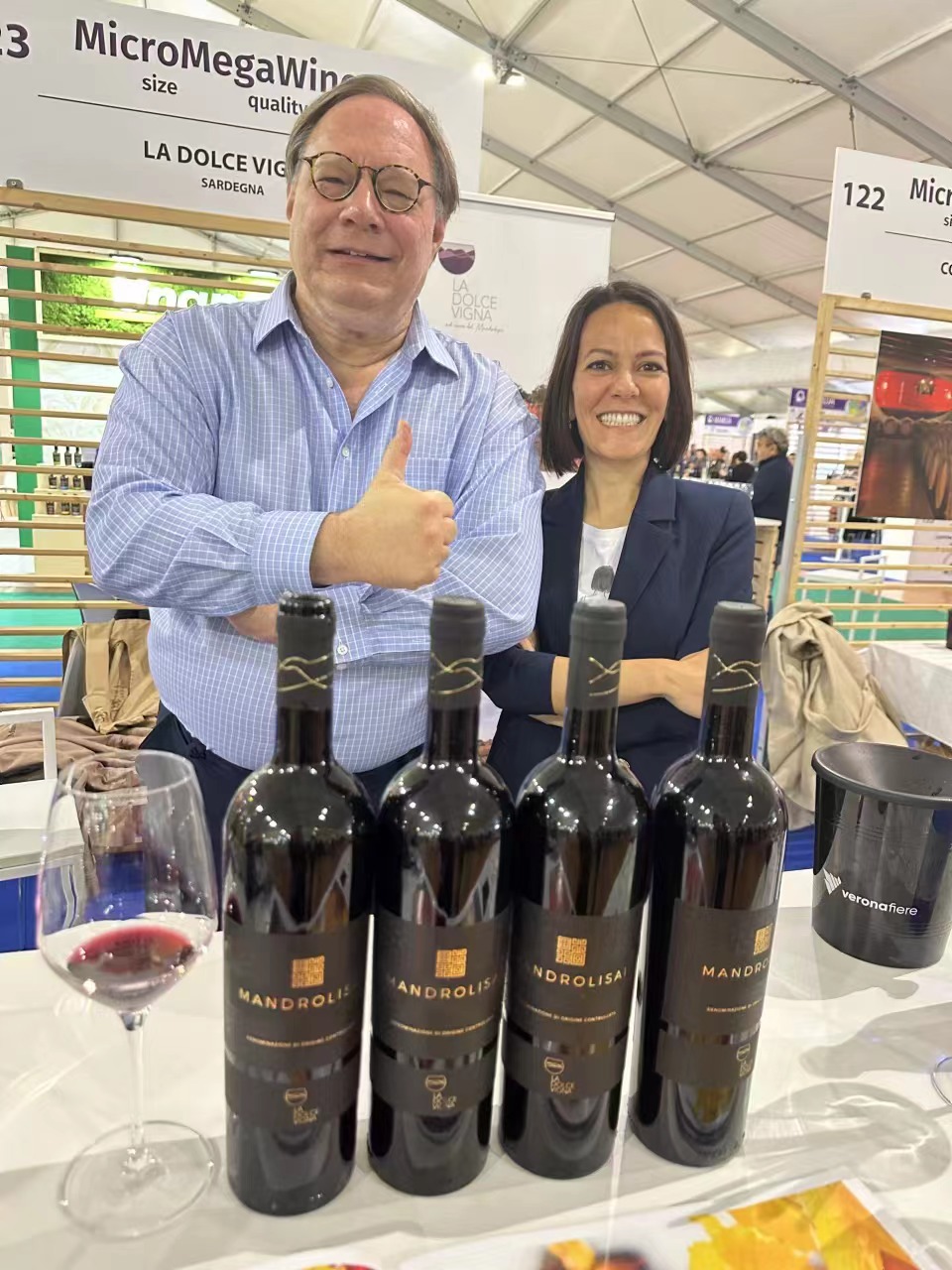
Another Sardinian small-fry winery, Bentu makes a very interesting white wine from the ultra-rare Arvesiniadu grape (there’s only about six or seven producers of Arvesiniadu wine left). It is most common in inland Sardinia, but the two partners who run Bentu decided to take it from where one of their grandfathers had planted it down to the coast, and in so doing have obtained a totally different expression of Arvesiniadu wine. By the way, Bentu also makes a knockout Vermentino di Sardegna. Look for both these wines, though you’ll likely need to visit the island, given the Lilliputian volumes of each made.
The Bentu 2022 Arvesiniadu Isola dei Nuraghi is pale straw-yellow with some green-gold tinges. Delicately scented on the nose, with aromas of acacia honey, yellow apple, pear and thyme with a savoury undertone. Then smooth and well-balanced, with ripe yellow fruit and marine nuances of sea breeze and coastal bittersweet herbs lingering nicely on the saline, well-rounded and long finish. Currently about 1800 bottles/year made. Drinking window: 2024-2026.
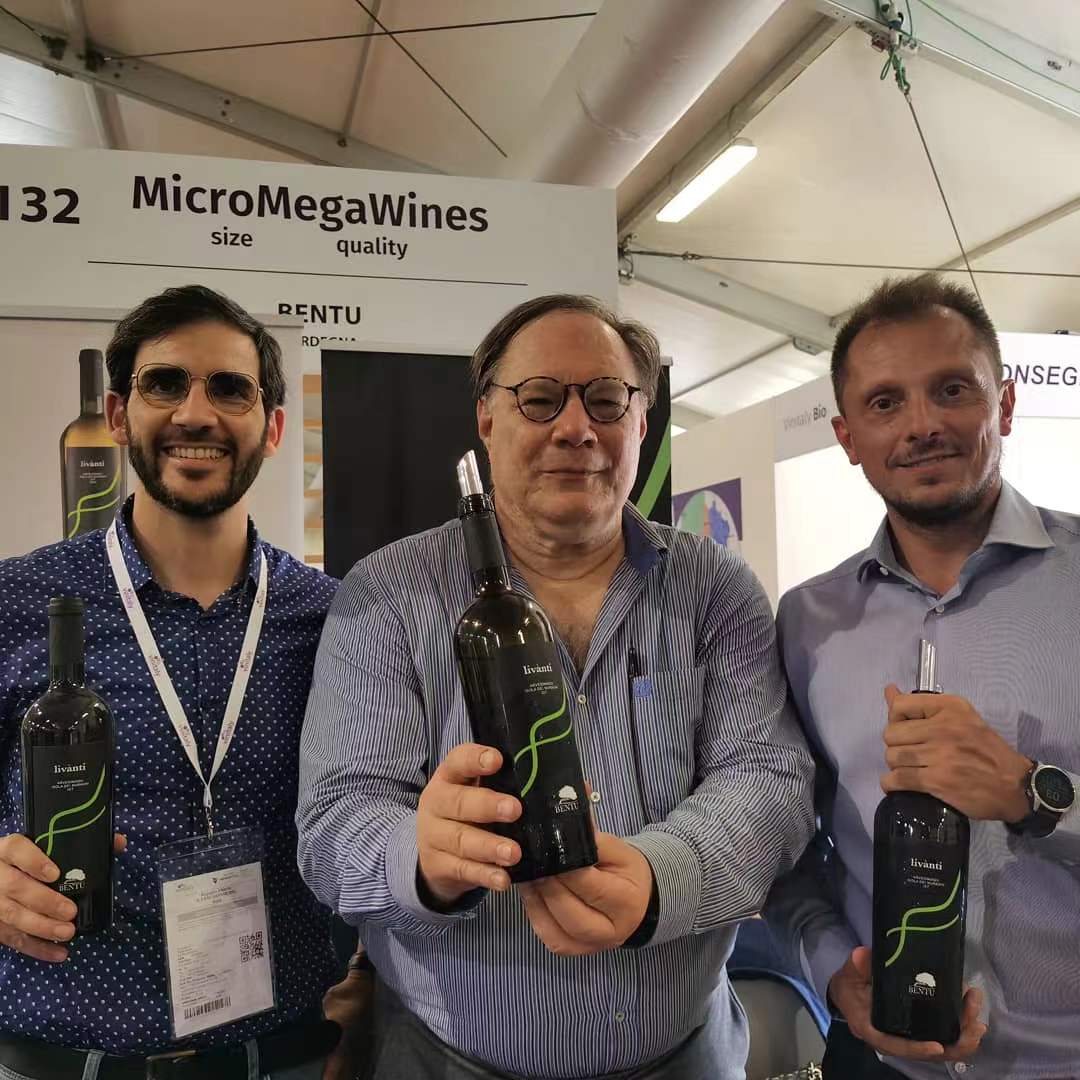

 中文
中文



